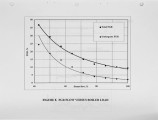| Abstract |
Experts estimate that more than 2,000 stoker boilers are in operation in the United States firing coal, municipal solid waste (MSW), biomass, and refuse derived fuel (RDF). Historically such boilers have had problems with gaseous and particulate emissions, erosion, slagging, and fouling. Environmental regulations, however, are becoming more restrictive and ultimately will require industries to retrofit many existing solid fuel-burning operations, such as stoker boilers, with technologies that will allow them to meet new emission requirements for nitrogen oxides, carbon monoxide, total hydrocarbons, sulfur dioxide, particulate, and other pollutants. Small quantities of natural gas injection combined with flue gas recycle has been demonstrated effective in meeting new NOx and CO emission requirements. The most common NOx control technology utilized in stokers is selective noncatalytic reduction (SNCR) systems. The Institute of Gas Technology (IGT) with support from the Gas Research Institute (GRI), IGT' s Sustaining Membership Program(S:MP) and the natural gas industry has developed the patented (1,2) METHANE de-NOX reburning process for stokers to reduce NOx emissions to the levels set by current EPA regulations without increasing the levels of other undesirable emissions. In contrast to conventional rebuming, where the reborn fuel is injected above the combustion zone to create a fuel-rich reborn zone, with METHANE de-NOX, natural gas is injected directly into the combustion zone above the grate; this results in a reduction of NOx formed in the coal bed and also limits its formation through decomposition of the NOx precursors to form molecular nitrogen rather than nitrogen oxides. The METHANE de-NOX process was field tested at the Olmsted County waste-to-energy facility in Rochester, Minnesota, and at an incineration plant in Japan. Compared to baseline levels, about 60% NOx reduction and an increase in boiler efficiency were achieved. IGT, Detroit Stoker Company, and Cogentrix are presently demonstrating the METHANE de-NOX technology on a coal-fired 390 M11 Btu/h stoker boiler at a 240 MW cogeneration plant in Richmond, Virginia. Baseline tests were conducted which indicated that 60% NOx can be reduced by utilization of METHANE de-NOX; this has been confirmed by retrofit tests which showed NOx reductions of 60% and 70% using 8% and 25% natural gas (as a percent of heat input to the boiler), respectively. |






















